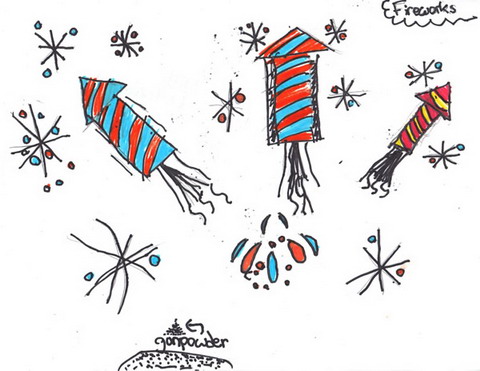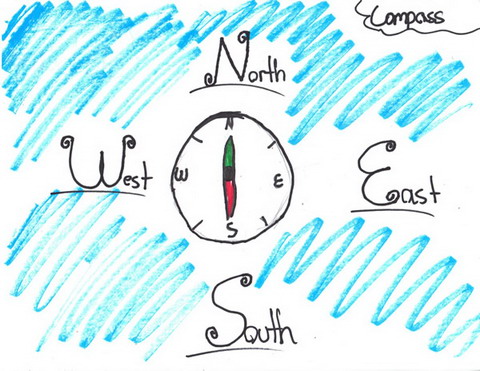The Inventions of Chin of Cho: Told from a first person perspective
By Nick L.
U.S.A.
Hello! My name is Chin Chu, but my nickname is Chin of Cho. I am the inventor of the crossbow. Glide through history with me as I take you on my travels through Ancient China. Let’s explore some of the inventions and techniques that changed the world.
The Crossbow
First, I am going to tell you about my invention, the crossbow. I invented it between 100 B.C. and 700 B.C. Although there are not very many accurate records for this time period, I’m still credited with this amazing invention. Sure, the regular bow was great, but a bow that has much more accuracy and goes at a much higher speed is…Amazing! It is made of wood and it even has a trigger instead of a string for those who do not have the strength to pull the string all the way. I used my crossbow in battle and this gave me an advantage over my foes because the arrows could cut through their armour. I even let my friend who was an assassin borrow my reliable bow for his top secret assignments. I also invented a sniper crossbow that had a longer barrel through which the arrow would be shot. Hold on to your feathers as we shoot to our next invention.
Planting in Rows
Another invention from Ancient China that I want to share is planting in rows. It is actually more of a technique than an invention. This started back in 6 B.C. and allowed plants to grow faster and stronger.
Watering, planting, weeding, and harvesting are much easier to do in rows than if planted randomly. The wind also does a lot less damage to the rows of plants. Another advantage of this technique is that the plants are not becoming tangled under the soil.
The main crops that they grew in Ancient China were millet, which was very common, and rice. Other crops they grew were soy bean, peas, and bamboo shoots. Ashes and cow dung were used to fertilize the crops. The Ancient Chinese also used the technique of crop rotation, which meant that they never grew the same crops in the same spot two years in a row.
Let our vines lead you to our next invention which will guide you on your travels.
The Compass
The second invention from Ancient China that I want to talk about, and my personal favorite, indicates direction. If you guessed the compass, you are right! The first compass was made out of lodestone in 4 B.C. during the Qin Dynasty in China. The Chinese realized that this ore could automatically tell the difference between north and south. At first, it was used mostly as a fortune telling tool and was used mainly to create a feng shui environment. The ancients believed that the lodestone in the compass attracted iron because it was naturally magnetized. At first, they would hang the metal over a board and the iron would automatically turn and pivot. This eventually led the Chinese to use the compass for indicating direction. In fact, it was Zheng-He who was the first to record that he used the compass to find his way. It was a very handy tool for his voyage between 1405 and 1433.
Some main differences between the Chinese compass and the modern compass are that the Chinese compass will always point south and the modern compass points north. Navigate with me to our next invention, just don’t get lost and make sure your compass is pointing south.
The Seed Drill
One of the most popular inventions in the second B.C. is the seed drill! The seed drill was used to plant seeds. It had a small plow that could cut small furloughs into the ground. There was also a fancy mechanism that dropped the seed and a brush or sometimes a roller would cover the seed with soil. This allowed the seeds to be planted in a uniform depth. This amazing invention was only adopted in 1556 and changed the way the people of ancient China planted crops. This invention was so successful that it spread worldwide.
Gun Powder
We should probably mention another very famous and very relevant invention that is still used daily: Gunpowder. Gunpowder was made in the Tang Dynasty. The alchemists in china saw the saltpeter changed to a purple flame when heated and so this became a very important component of the gunpowder. The problem with the formula at this stage was that there was not enough saltpeter to make it detonate, but was highly flammable.
Last, but not least, the ancient Chinese invented the harness for a horse. This harness pressed back on the horse to keep it from using its full strength. This invention helped a lot in 4 B.C. It had a wooden horse yoke at first. Then, they improved it by making a softer yoke for the horse.
I think it was an amazing invention!
This was an amazing journey back to ancient China. We learned about inventions created by ancient Chinese such as the seed drill, compass, planting in rows, crossbow, and harness for a horse. You also found out about Chin Chu and his life.
We owe so much to the ancient Chinese for giving us so much that we still use today.





“Food of Ancient China.” www.librarythinkquest.org. Date Accessed: February 7, 2013.
“History of the Chinese Compass.” www.chinesecompass.org Date accessed: February 6, |
